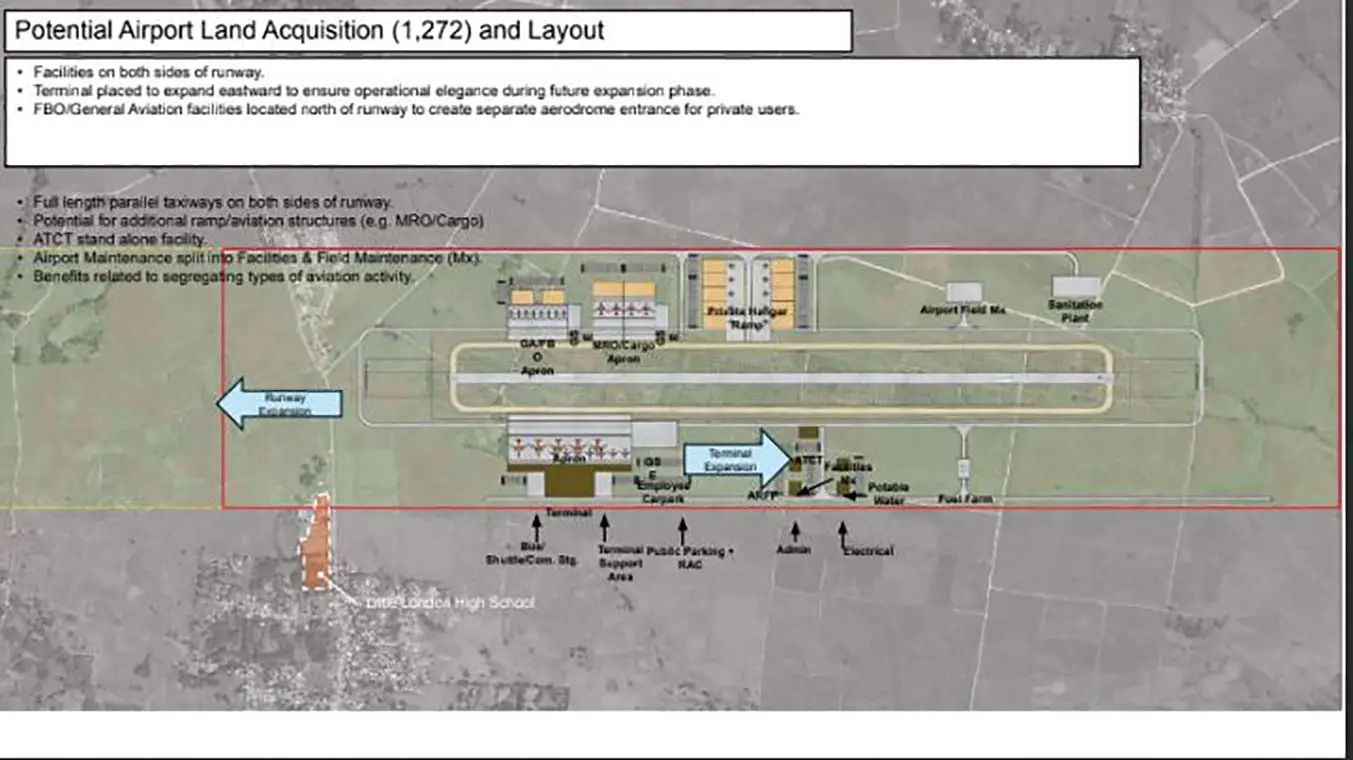
Little London chosen for new international airport
THE Airports Authority of Jamaica (AAJ) has identified Little London, Westmoreland, as the site for a new international airport in western Jamaica after a series of investigations to determine a feasible location.
The announcement of the new airport was made by Prime Minister Andrew Holness recently as part of the Government’s efforts to address the growing demand for air travel in the region and overcome the limitations of existing infrastructure.
“I can assure you that most of you were not more surprised than I was, because I immediately knew what that meant,” said Horace Bryson, senior director of engineering, maintenance and projects at the AAJ during the third annual Throp-X conference at Travellers Beach Resort in Negril.
The initial proposal for the new airport involved expanding the Negril aerodrome into an international airport. To assess the feasibility of this project, the AAJ began conducting a detailed study to explore potential options.
But given the complexity of such a large-scale development and the limited local expertise, the AAJ launched an international tender in November 2023 to hire consultants to guide the planning process. However, the AAJ encountered several challenges during the assessment, including significant environmental concerns and the site’s limited capacity. One of the primary issues was the Negril aerodrome’s proximity to the Great Morass, a crucial ecological area that plays a vital role in preserving Negril’s famous white sand beaches, which are globally renowned.
“Once you begin to mess with the ecology of the morass, one of our biggest, grandest attraction and well-known thing across the world, the white sand beach of Negril, we are eroding that, ” he warned.
The area also posed safety risks due to frequent fires and the inadequate size of the aerodrome for larger aircraft. With the original proposal deemed unfeasible, the AAJ turned its attention to other locations. Jamaica currently operates three international airports: Norman Manley in Kingston, Sangster in Montego Bay, and Ian Fleming International in St Mary. However, the demand for air travel has outgrown the capacity of the two major airports, according to Bryson. It is believed that the new airport will help relieve pressure on Sangster International Airport in Montego Bay.
“The Sangster International Airport handles flights from far-reaching destinations, but its ability to expand is limited,” said Bryson.
Airport development is guided by a master plan, reviewed and updated every five years, to anticipate and meet future demands.
“You can’t wait until the demand is upon you to start building. Construction takes time. That’s why, at most airports, you’ll always see some measure of construction going on,” he noted.
While Sangster is currently undergoing upgrades, Bryson pointed out that in another 10 to 15 years the demand for air travel in western Jamaica could surpass what the facility can accommodate. This is particularly significant given the trend of larger aircraft, such as the Airbus A380, becoming more common. Larger planes, carrying 250 to 300 passengers, require longer runways and expanded infrastructure to ensure efficient passenger processing.
The AAJ’s analysis of potential sites included a detailed review of seven locations in Negril, ultimately narrowing it down to two: New Hope and Little London. After further evaluation, Little London emerged as the most viable option. The proposed site offers several advantages, including ample space for the construction of a runway, which will initially be 2,240 metres in length — adequate for aircraft flying to destinations as far as Canada. The development plan includes the layout for essential facilities such as passenger processing areas, maintenance and repair operations, and other support buildings.
“Make sure that you not only build for now,” noting that the master plan for the airport will be reviewed every five years to ensure it continues to meet evolving demands.
However, the land currently occupied by Little London High School and the Museum Flats housing scheme will need to be cleared for construction. Bryson pointed out that while the land is not immediately needed for the project, the AAJ has recommended the relocation of these facilities to allow for development. From an environmental perspective, Bryson further noted that the new airport would contribute significantly to sustainability efforts, with the AAJ estimating a reduction of 16,756 metric tonnes of CO2 emissions annually. This reduction would result from eliminating the need for tourists to travel from Sangster International Airport in Montego Bay to Negril, thus reducing road traffic and associated emissions.
“If a tourist lands in Montego Bay and their destination is Negril, they’re coming from Fort Lauderdale, and it takes them less than two hours to get to Jamaica. They land in Montego Bay, and it takes them sometimes two hours to get to Negril,” he added.
Many tourists, according to surveys, have expressed frustration over the time spent on the road during their short stays. In fact, about 43 per cent of visitors arriving in Montego Bay end up staying in Negril. This statistic is derived from data collected through immigration forms, which ask travellers for their final destination.
The financing for the new airport will follow Jamaica’s established concession model, which has been used successfully for the country’s existing international airports. Under this model, foreign entities bid for the rights to manage the airports, paying a percentage of gross revenue to the Government.
“Our country, Jamaica, is one of the pioneers of what we call a public-private partnership arrangement. It has done so well that people from first-world nations have come to understand what we have here as a model, and some of it has been implemented in other jurisdictions,” he revealed.
The next steps involve finalising the master plan report, reviewing funding structures, and presenting the plan to the Government, which he estimates will be by March 2025.

























